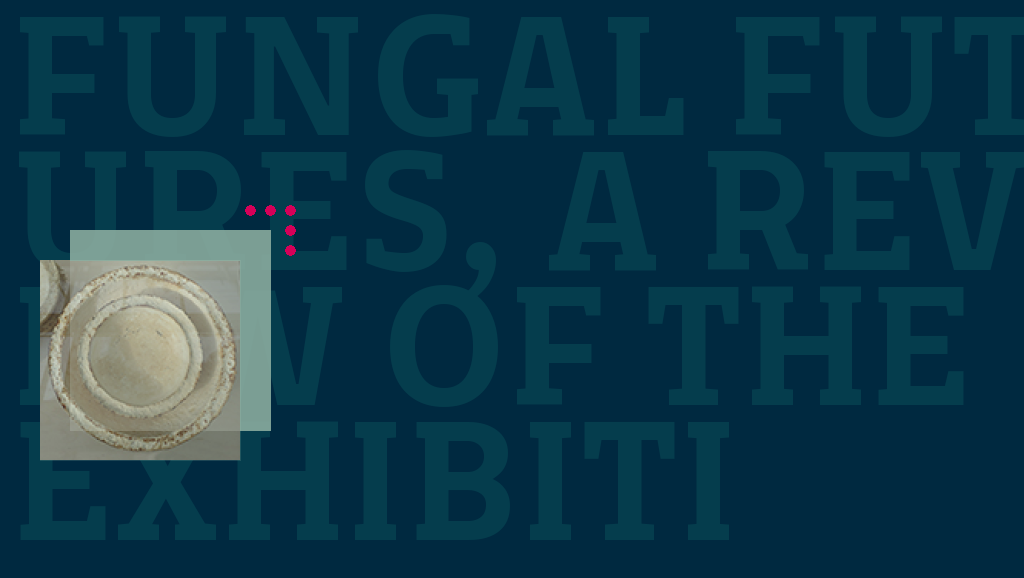The Fungal Futures exhibition runs from March 24 to May 16 2016, and is being held at the Old Botanical Gardens, part of the University of Utrecht Museum, in the centre of the beautiful city of Utrecht.
The exhibition is curated by Maurizio Montalti of Officina Corpuscoli, whom regular readers will know through an interview by Margherita Fronte in which Montalti describes his work and motivations.
For readers new to his work, Montalti is a designer whose works is extremely innovative, on the border between art and biology. Single objects that are individual in their field, forged from materials gained through the manipulation of living materials. His chosen medium, as the title suggests, is fungus.
The exhibition website describes FUNGAL FUTURES Growing Domestic Bio – Landscapes as presenting the work of an international group of artists and designers who develop innovative materials and applications using mycelium, the rhizomic network of ‘fungal roots’.
It goes on to explain that:
Fungal mycelium consists of a dense network of interlocking filamentous cells, called hyphae. The mycelium can break down plant matter and convert the breakdown products while extending its network of hyphae.
This fungal behavior can be used to create biomaterials with novel properties. The materials may consist of a mixture of waste stream and mycelium (composites) or can be completely ‘pure’. Such fungal materials represent attractive alternatives to traditional synthetics as they are 100% natural, fully compostable, and resulting from waste streams.The NWO project ‘Mycelium Design’ (Jan.2014 – Dec.2015) enabled collaboration between Utrecht University (UU), Officina Corpuscoli (OC) and Stichting Mediamatic (MM). Through an open call, the partners have invited artists and designers to participate in the project as part of the Myco Design Lab. Along the duration of the project, OC and UU developed a palette of materials by making use of natural variation, environmental growth conditions, and genetic modification. These materials were provided to the selected artists and designers, who explored their potential (qualities and opportunities) and provided Officina Corpuscoli (Maurizio Montalti) feedback about the way properties needed to be improved to meet requirements for a range of specific products and applications.
The projects on show as part of FUNGAL FUTURES, have all been developed as part of innovative research processes that operate at the intersection of design and science. The creatives, working in direct consultation with scientists, have adopted and developed unorthodox novel methodologies and techniques, as part of their practice.
FUNGAL FUTURES presents work of designers and artists who were involved in the NWO project ‘Mycelium Design’, as well as projects of selected invited creatives working along the same principles. The exhibition aims to demonstrate the generation of a near future in which fungal organisms will be one of the main actors leading towards a responsible social development.
From a visitor’s perspective, the exhibition presents a series of artistic creations, some decorative but others practical (such as furniture and clothing), all produced using these fungal materials. The array of possibilities is quite startling, and really opens up a debate into the possibilities of transforming society away from plastics dependency into the use of such natural materials.
Videos scattered throughout the exhibition and available online through the University Museum website demonstrate the different processes used, with techniques including the use of 3D printers to make forms to give the materials their required shapes, and growing and drying practices. They really demonstrate how artisan these techniques can be in reality, with some of the artists using domestic heating systems and tools to produce their pieces.
The exhibition as noted above is held in the old botanic gardens, a beautiful and tranquil hidden gem in the centre of the old city. The art is placed in greenhouses, on water beds and within the plant life, and the effect of the natural setting is also striking. The natural process of the growth of the art objects complimented by the setting, in its day another form of cutting edge botanical science, really seems to bring Montalti’s philosophies to the fore.
This is a fine, thoughtful and thought provoking exhibition, in a beautiful setting, and highly recommended to any readers who have the possibility of passing through the Netherlands. All at the Bassetti Foundation wish the artists and organizers every success with their work, will be following future developments and will keep our readership informed.
Thanks also to the Museum staff for their courtesy and help.
Photos are available below.
—————-
















